Linear Algebra
It is the study of vectors and linear functions.
- Explanation 1:
- It is a branch of mathematics that lets you concisely describe coordinates and interactions of planes in higher dimensions and perform operations on them.
- Explanation 2:
- Linear algebra is a branch of mathematics that deals with vectors (quantities with both magnitude and direction), matrices (rectangular arrays of numbers), and linear transformations (functions that preserve addition and scalar multiplication).
- Explain like I am 5
- Imagine you have a bunch of LEGO blocks. Each block is like a number, and you can stack them differently. If you line them up in rows and columns, that’s like a matrix. If you push or stretch them in a certain direction, that’s like a transformation. Linear algebra helps us understand how things change when we add, move, or pull these blocks in a straight and predictable way. It’s like playing with numbers in an organized way.
- it is 1 of the main building blocks of machine learning
Applications in Machine Learning
- Data set and Date Files
- We fit the model on a data set in ML
- This data set is either a matrix or a vector
- e.g.: our model could be a fitness-related model that predicts the quality of sleep
- Images and Photographs
- Computer vision application
- you cannot send an image to a model and expect it to understand
- each image is made of pixels that are colored squares of varying intensities
- a black and white image is a single-pixel
- a colored image has 3-pixel values for RGB
- all images are stored as a matrix
- each operation (e.g.: cropping, scaling, et cetera) that is performed on the image is described using the notation and operations of linear algebra
- Computer vision application
- Data Preparation
- dimensionality reduction
- usually, we come across data that is made up of thousands of variables and our model becomes extremely complicated
- this is when dimensionality reduction comes into play
- data sets are represented as matrices and then we can use matrix factorization methods to reduce it into its constituent parts
- 1 hot encoding
- it is used when working with categorical data
- such as class labels for classification problems or categorical input variables
- it is common to encode categorical variables to make them easier to work with
- it is used when working with categorical data
- dimensionality reduction
- Linear Regression
- Used for predicting numerical values in simple regression problems
- the most common way of solving linear regression is via the least squares optimization which is solved using matrix factorization methods from linear regression
- Regularization
- Overfitting is 1 of the greatest obstacles in ML
- When a model is too close a fit for the available data to the point that it does not perform well with any new or outside data
- It is a concept from Linear algebra that is used to prevent the model from overfitting
- Simple models are models that have smaller coefficient values
- It is a technique that is often used to encourage a model to minimize the size of coefficients while it's being fit on data
- Principal Component Analysis (PCA)
- modeling data with many features is challenging and it's hard to know which features of data are relevant and which are not
- 1 of the methods for automatically reducing the number of columns of a data set is principle component analysis
- this method is used in ML to create projections of high dimensional data for both visualization and training models
- The core of the PCA method is a metric factorization method
- Latent Semantic Analysis (LSA)
- it is a form of data preparation used in natural language processing, a subfield of ML for working with text data
- in this case, documents are usually represented as a large matrix of word occurrences
- then we can apply matrix factorization methods to them to be able to easily compare, query, and use them as the basis for the ML model
- Recommender Systems
- They are used each time you buy something on Amazon or a similar shop and you get recommendations of products based on your previous purchases
- Deep Learning (DL)
- it is a specific subfield of ML
- Scaled up to multiple dimensions, DL methods work with vectors, matrices, and tensors of inputs and coefficients
Vectors
Scalar
- it is just a number
- we denote a scalar with a lower-case symbol, such as a or b
- e.g.: weight, temperature, blood pressure
- they are represented by numbers such as 200 pounds, 55 Fahrenheit, or 120 by 80
Vector
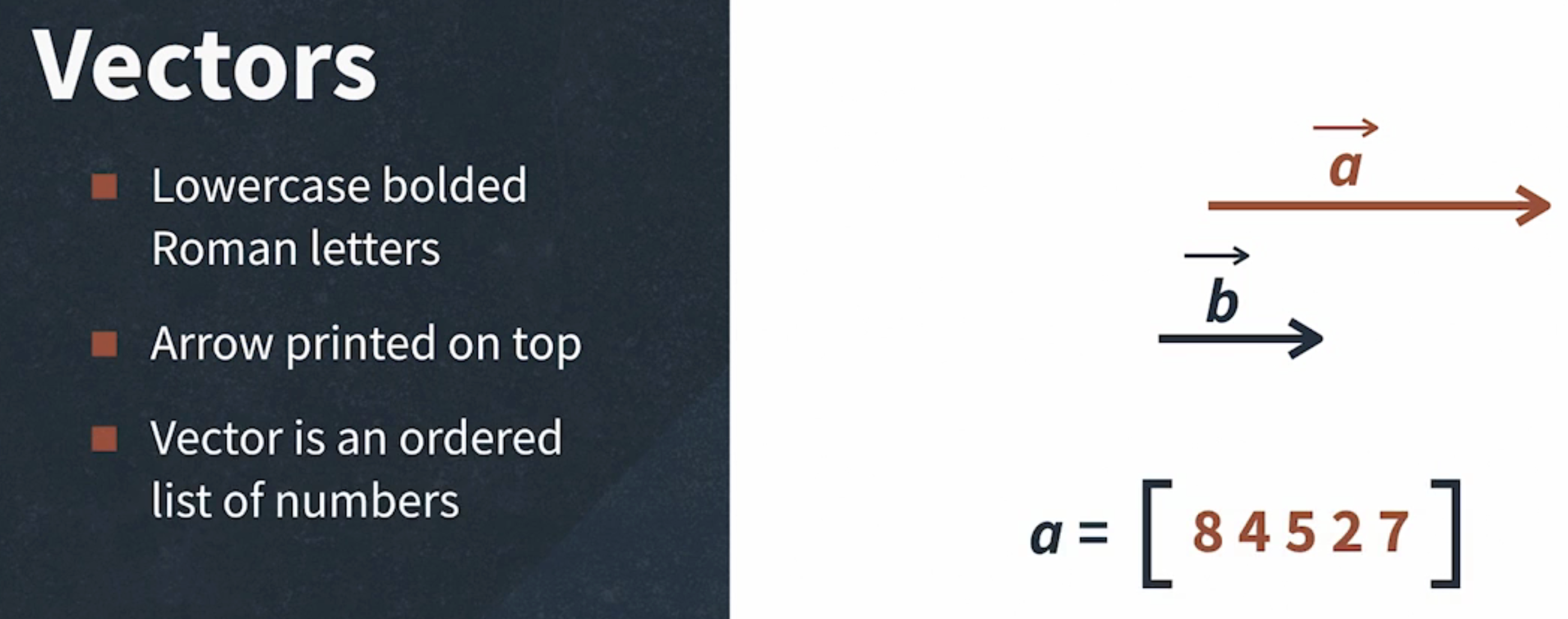
- The 2 most important characteristics of vectors
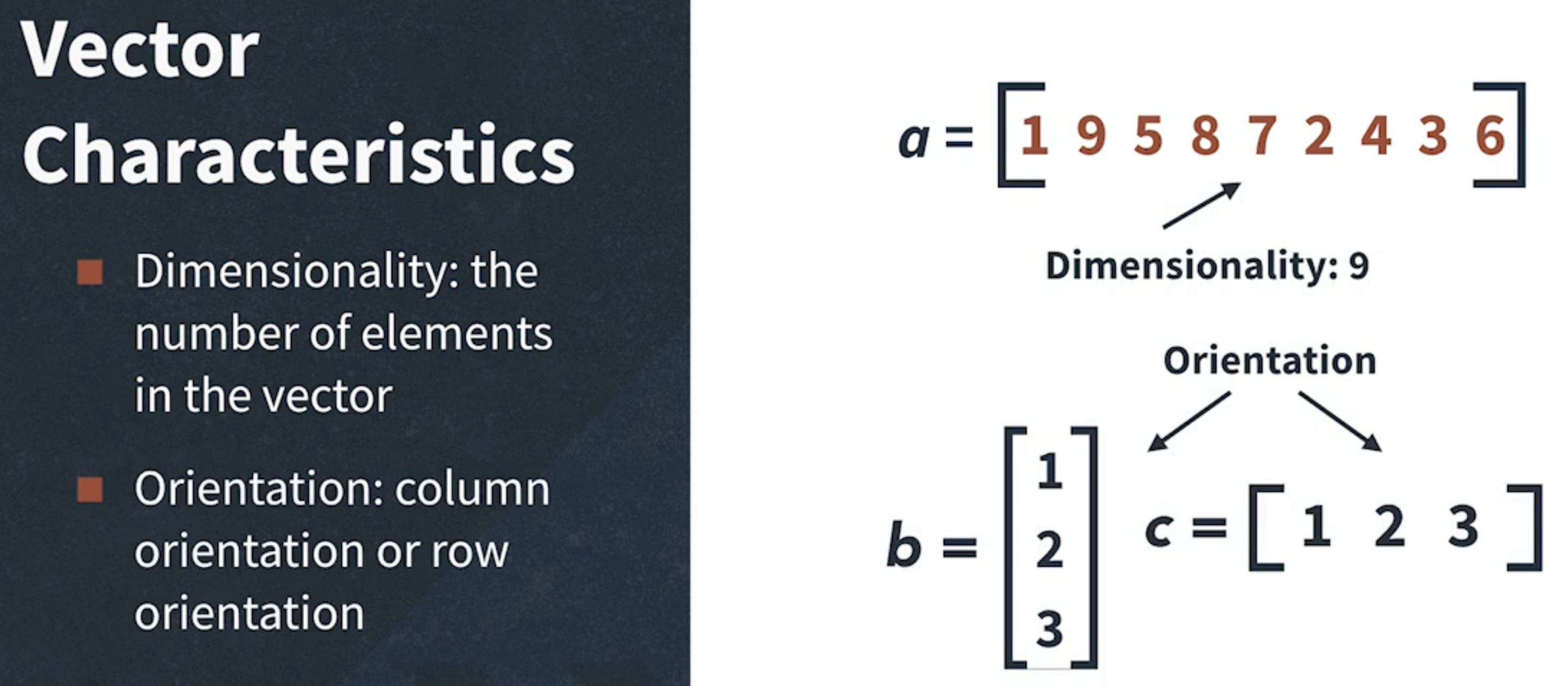
- Dimensionality
- the number of elements in a vector
- it is called
lengthor theshapeof the vector in python
- Orientation
- whether the vector is in column orientation standing up tall, or row orientation laying flat and wide
- Vector Examples
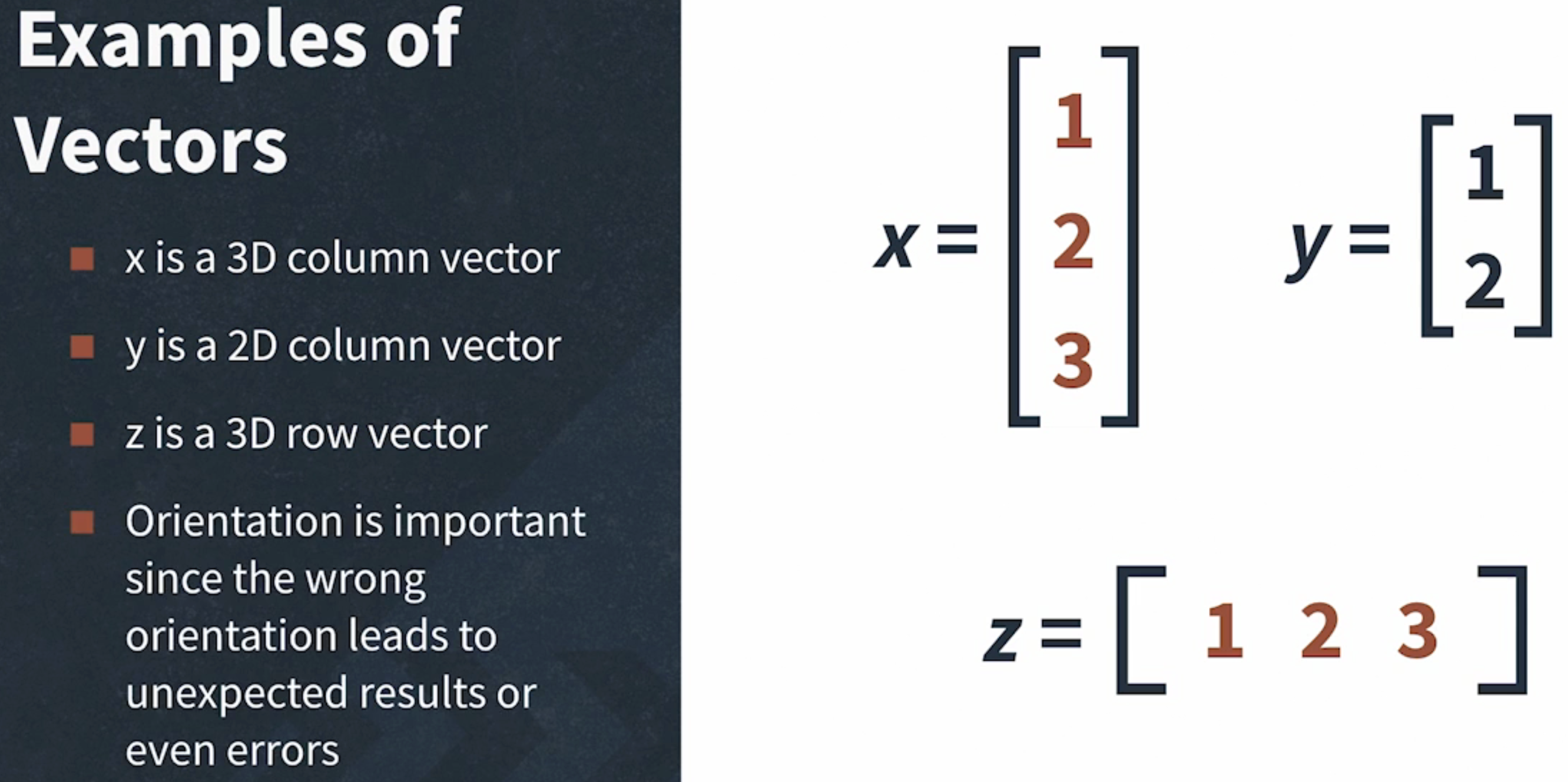
- Orientation usually doesn't matter, but when performing arithmetic operations it is extremely important
- wrong orientation leads to unexpected results or even errors
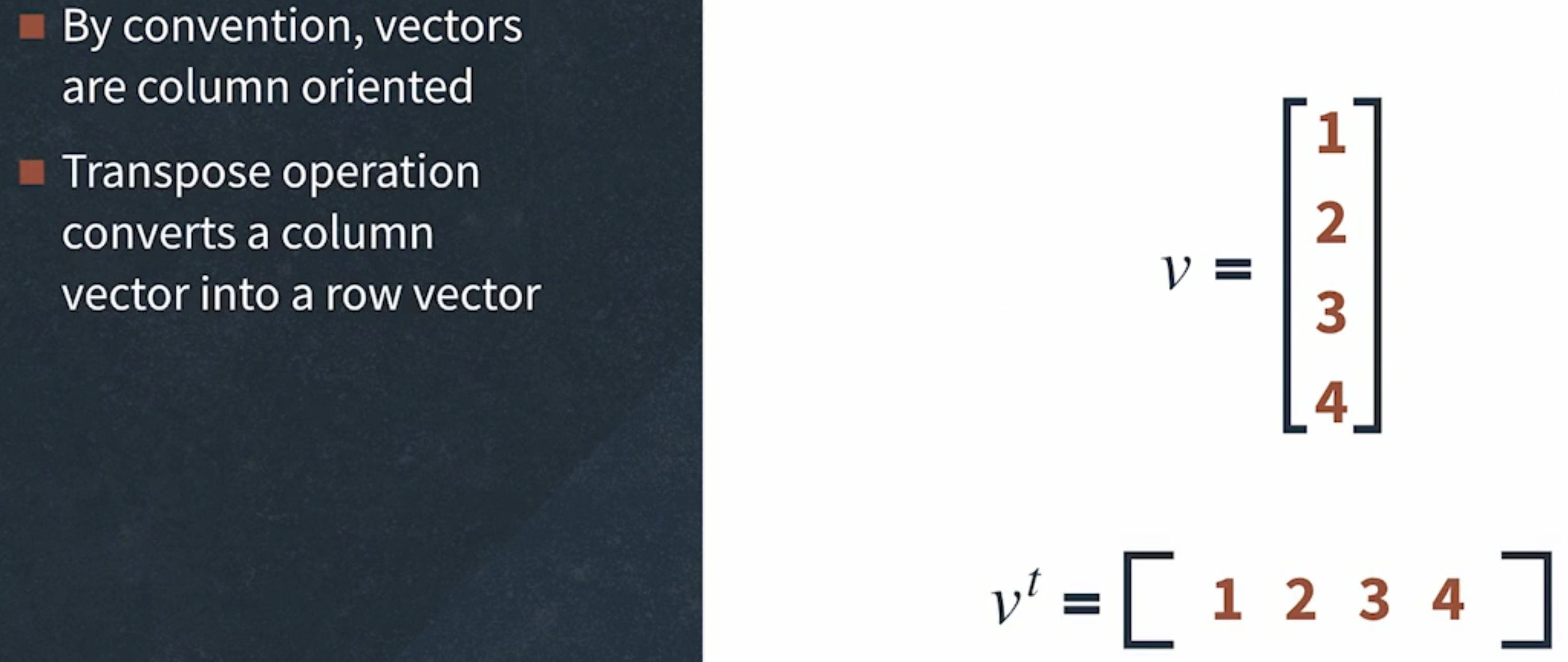
- If they're row-oriented, then they are written as with
twhere t indicates the transpose operation which converts a column vector into a row vector.
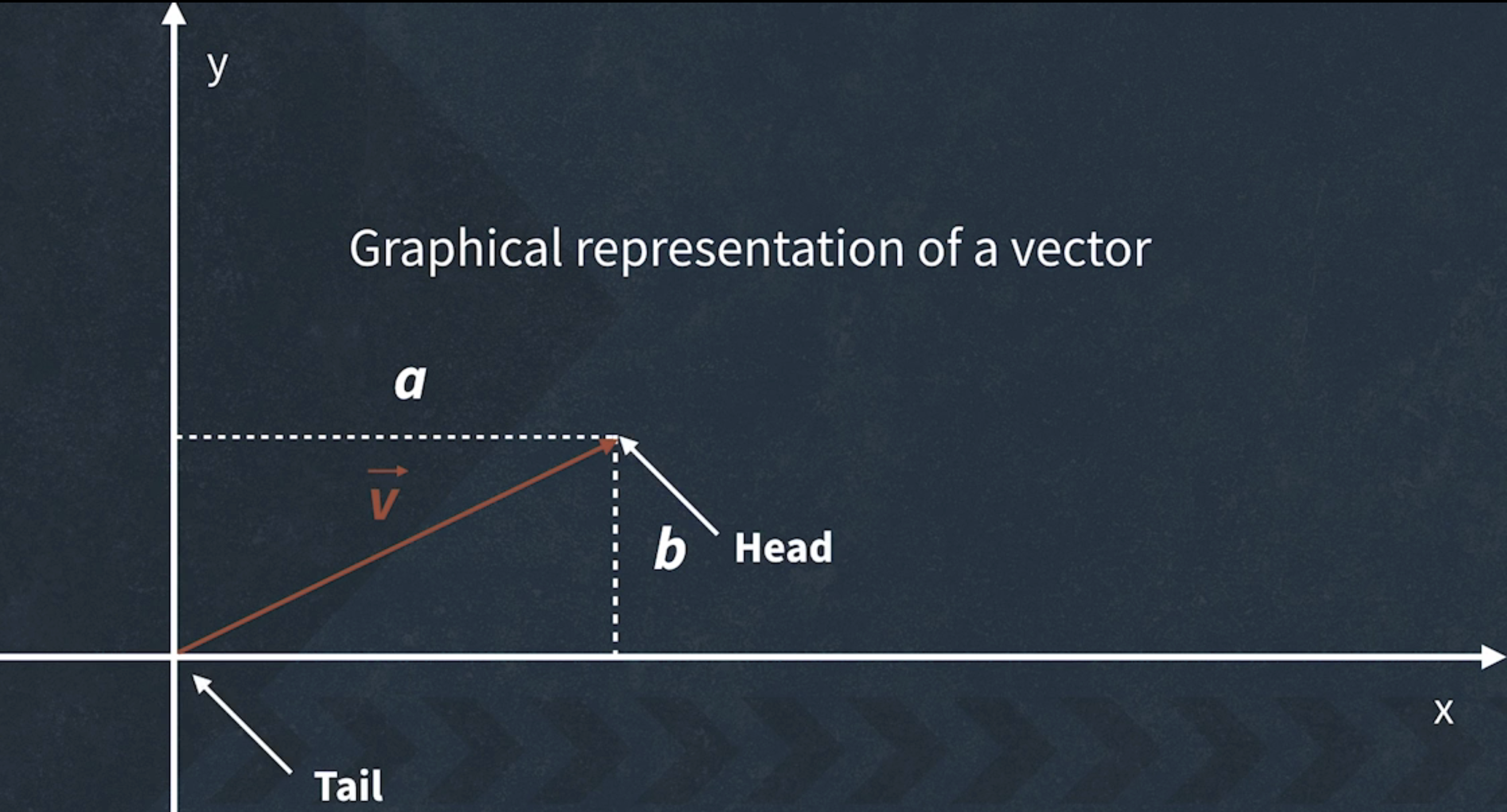
-
the red arrow v is the vector
-
a and b are scalars denoting the magnitude of v in horizontal and vertical directions.
-
The algebraic interpretation of a vector is an ordered list of numbers.
-
The geometric interpretation of a vector is a line that has a specific length and direction also called an angle.
-
It is computed relative to the positive X-axis.
-
The two points of a vector are called the tail, where the vector starts, and the head which has the arrow tip, where it ends.
-
Vector Representation in python
# Many linear algebra operations don't work on Python lists, we create vectors as NumPy arrays called ND (N-dimensional) arrays
vectorAsList = [1, 2, 3, 4, 5]
# This array is an orientation-less array meaning it's neither a row nor a column vector
vectorAsArray = np.array([1, 2, 3, 4, 5])
# In NumPy, we indicate orientation with brackets
# the outer brackets just group all elements together in one object as an additional set of brackets indicates a row
rowVector = np.array([[1, 2, 3, 4, 5]])
# It has only one column and five rows
columnVector = np.array([[1], [2], [3], [4], [5]])
Vector addition
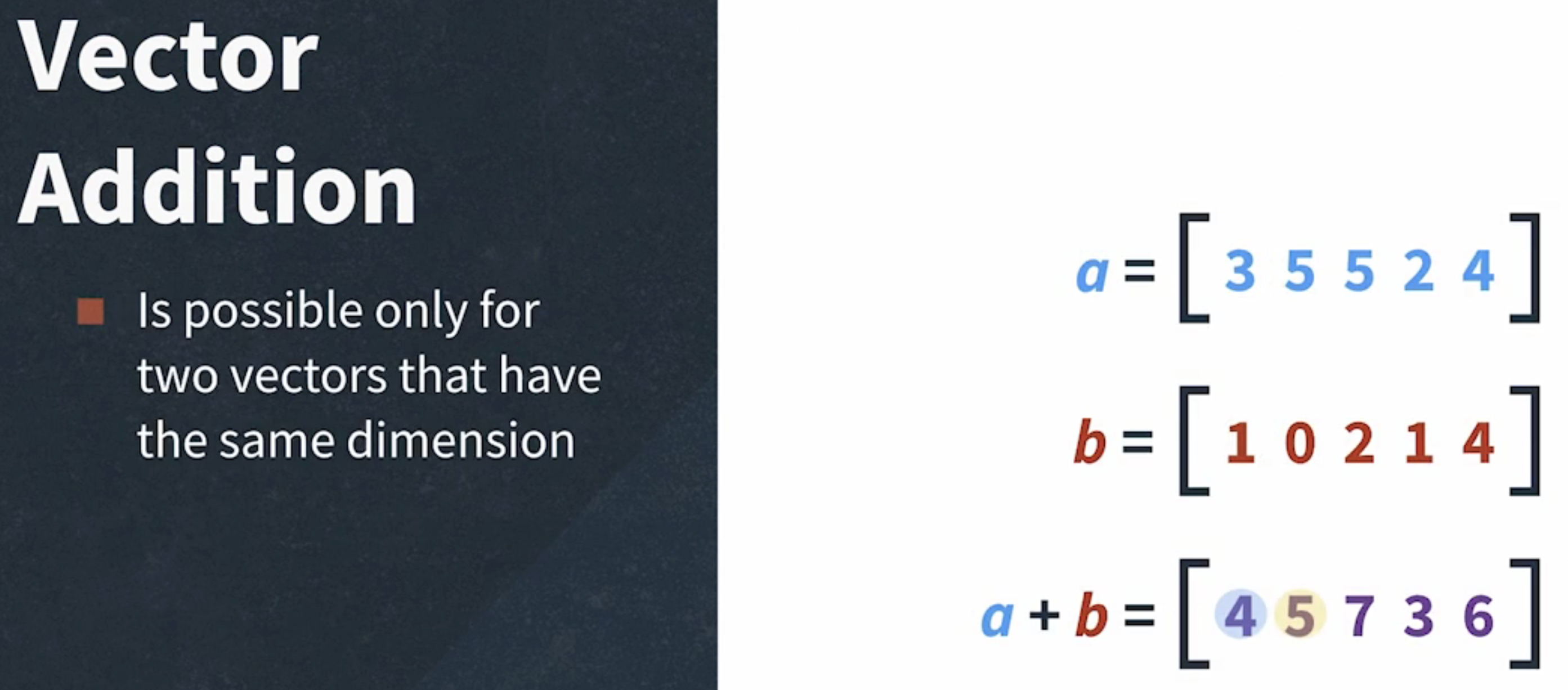
- To add two vectors, add each corresponding element.
- We cannot add a three-dimensional vector with a four-dimensional vector
- dimensions don't match the error example
import numpy as np
a = np.array([20, 40, 60])
b = np.array(10, 20, 30)
c = np.array([5, 10, 15, 20])
a + b # array([30, 60, 90])
a + c # ValueError: operands could not be broadcast together with shapes (3,) (4,)
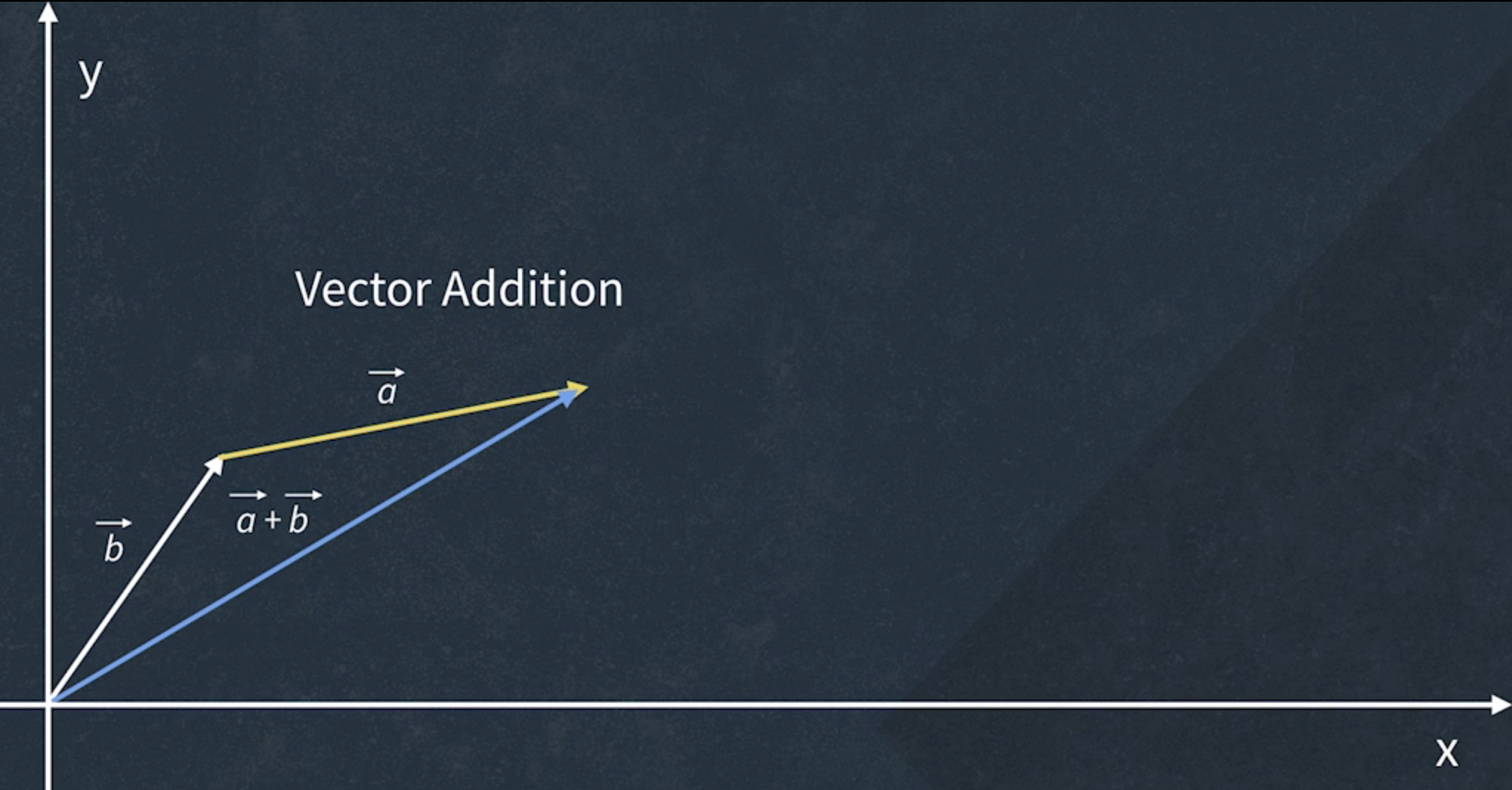
- To add two vectors, you have to place the vectors such that the tail of one vector is at the head of the other vector.
- The sum vector traverses from the tail of the first vector to the head of the second
Vector Subtraction
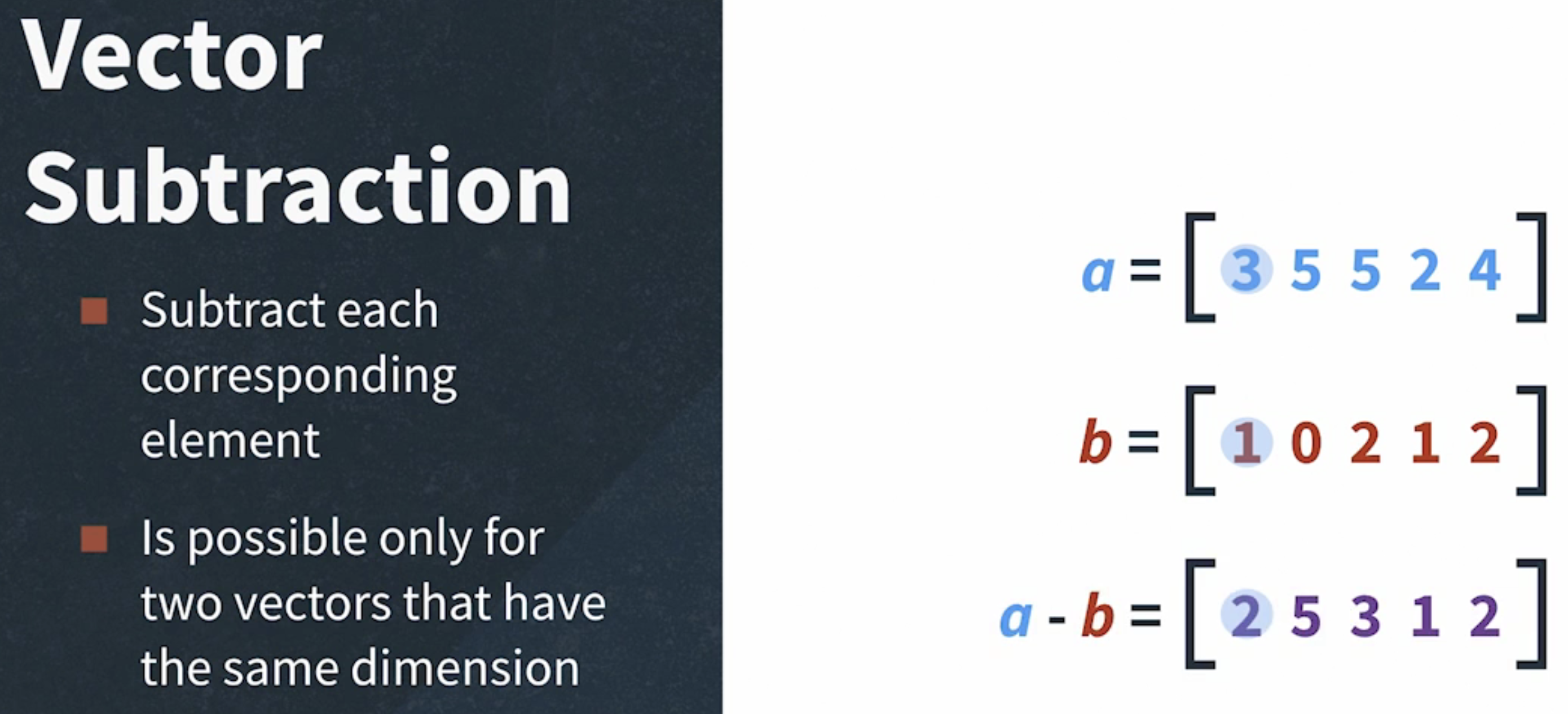
- We cannot subtract a three-dimensional vector from a four-dimensional vector
- dimensions don't match the error example
import numpy as np
a = np.array([20, 40, 60])
b = np.array(10, 20, 30)
c = np.array([5, 10, 15, 20])
a - b # array([10, 20, 30])
a - c # ValueError: operands could not be broadcast together with shapes (3,) (4,)
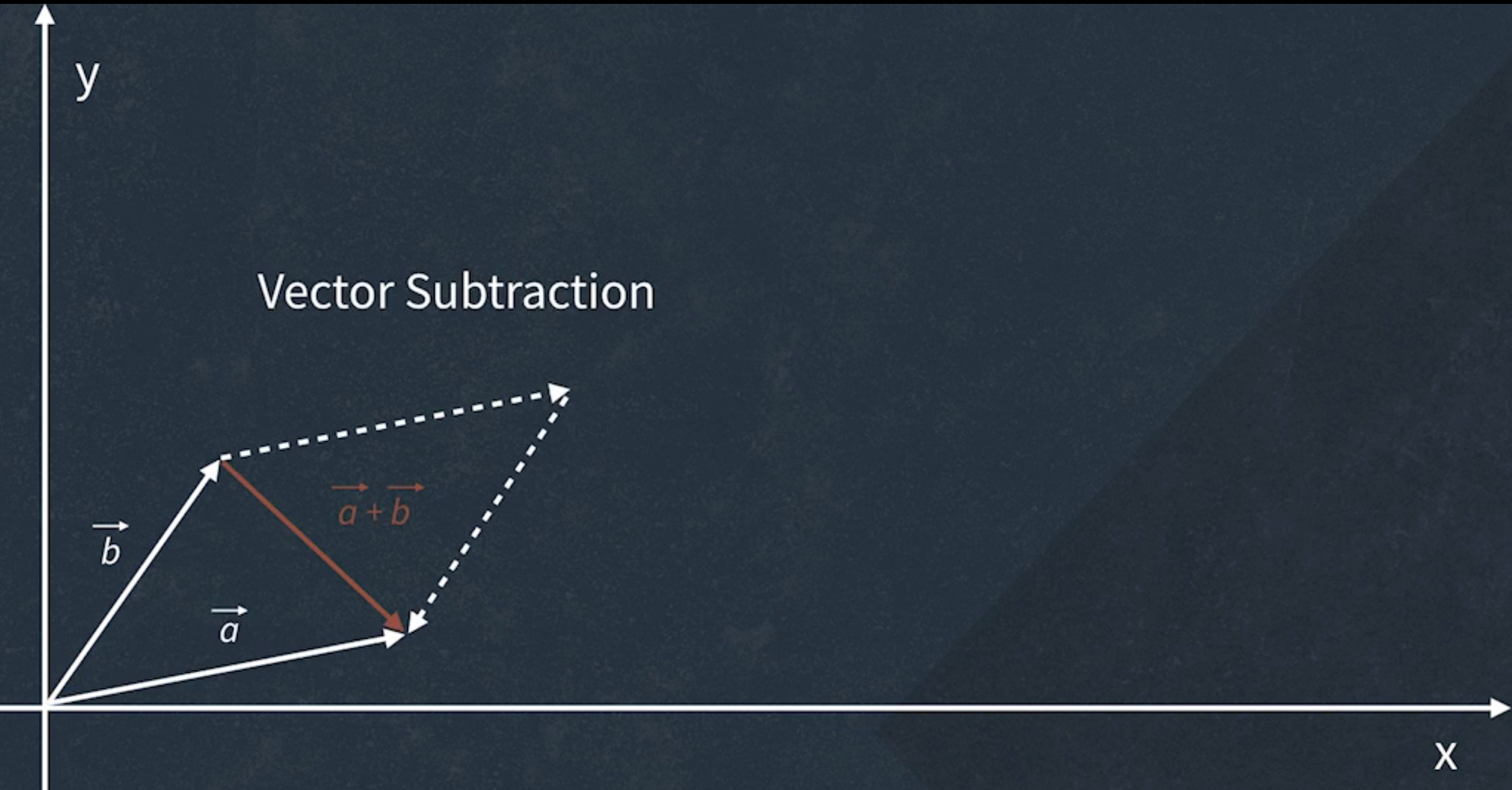
- To subtract vectors, you have to up the two vectors such that their tails are at the same coordinate.
- The difference vector is the line that goes from the head of the negative vector to the head of the positive vector.
Vector Multiplication
- example
import numpy as np
a = np.array([20, 40, 60])
b = np.array(10, 20, 30)
c = np.array([5, 10, 15, 20])
a * b # array([200, 800, 1000])
Vector Division
import numpy as np
a = np.array([20, 40, 60])
b = np.array(10, 20, 30)
c = np.array([5, 10, 15, 20])
a / b # array([2., 2., 2.])
Vector Scalar multiplication
- multiply each vector element by the scalar
- example
import numpy as np
scalar = 2
list_a = [10, 11, 12, 13, 14, 15]
list_as_array = np.array(list_a) # [10 11 12 13 14 15]
scalar * list_a # This is wrong, value is [10, 11, 12, 13, 14, 15, 10, 11, 12, 13, 14, 15]
scalar * list_as_array # array([20, 22, 24, 26, 28, 30])
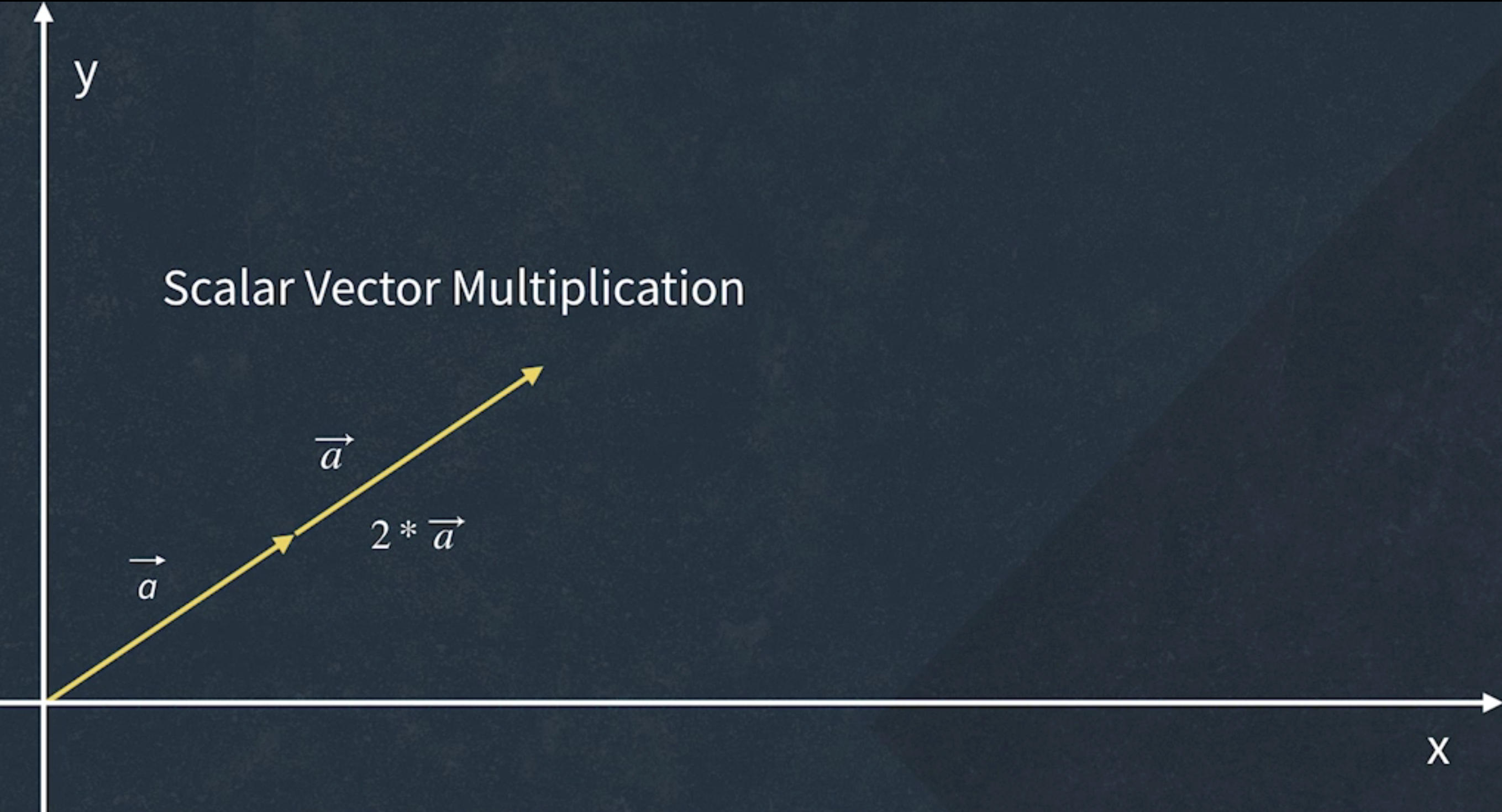
- we have four possible cases that depend on whether the scalar is
- greater than 1
- between 1 and 0
- exactly 0
- or negative
- Only in the case when the scalar is negative, the direction of the vector will change
Cartesian Coordinate System
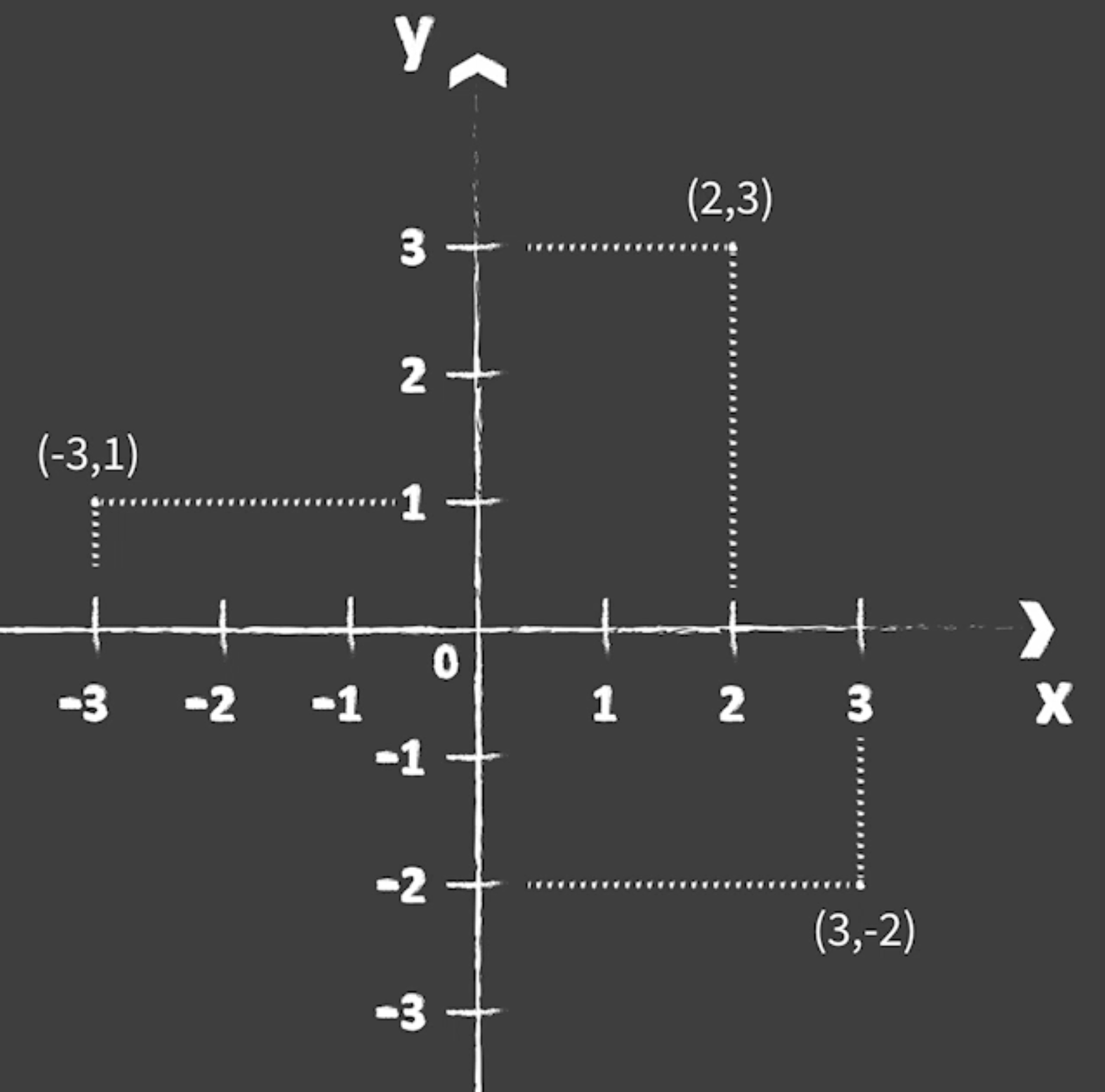
- we can locate a point by its combination of numbers
- it is important because it describes where a certain position is located in a 2-dimensional area
- Coordinates have 2 numbers (x-coordinate and y-coordinate)
- The x-axis runs left and right, the y-axis runs up and down
- The axes x and y meet at (0, 0) coordinate at the center which is called the origin
- A point is denoted by its distance along the x-axis followed by its distance along the y-axis
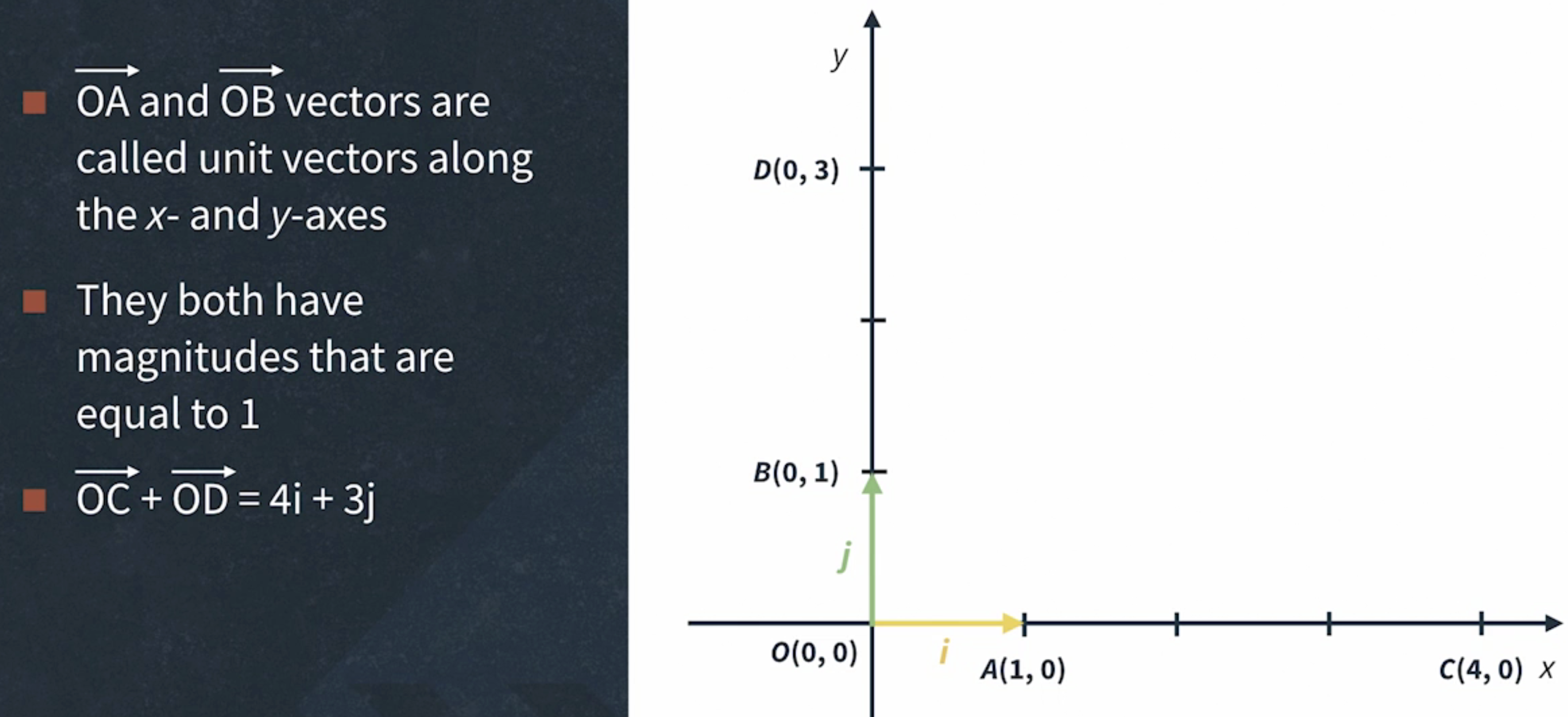
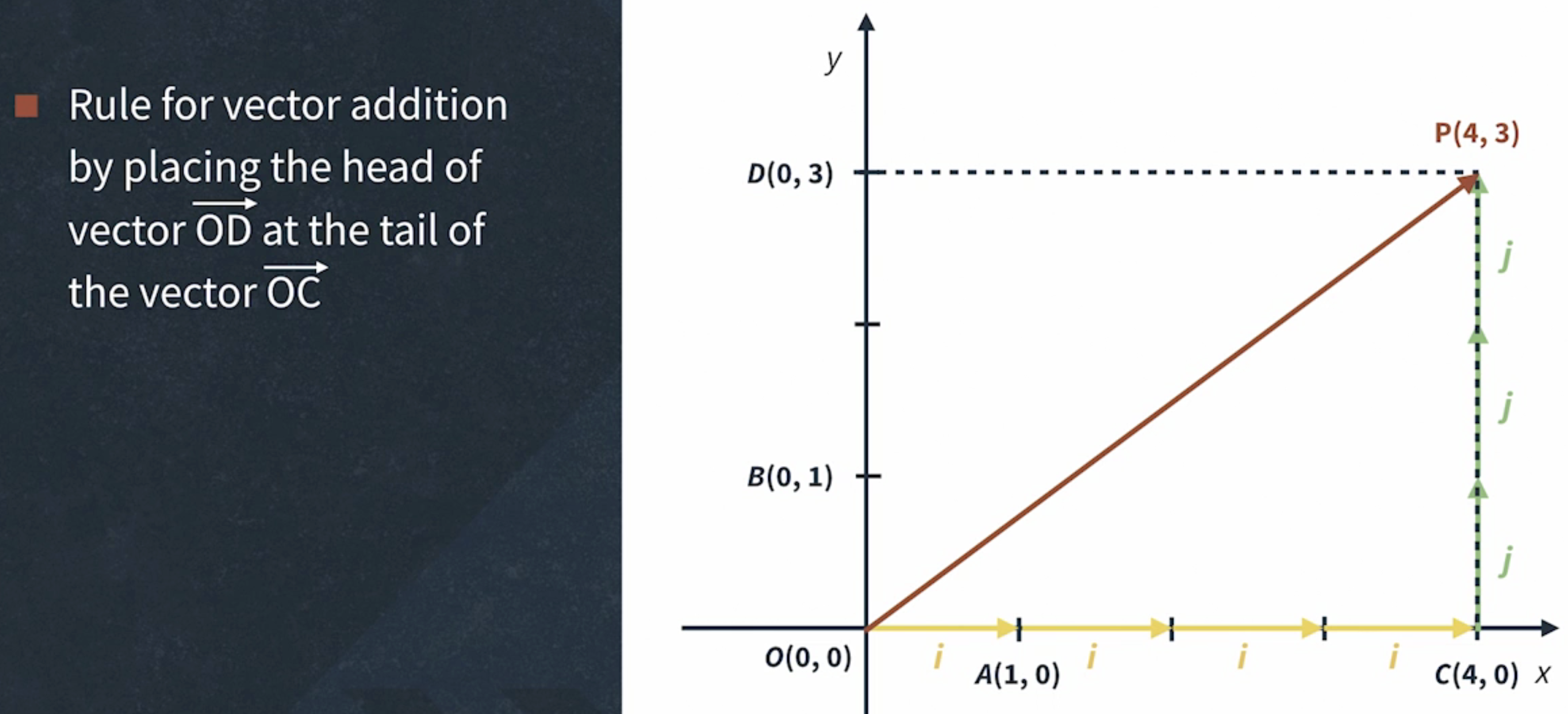
Vector Projections and Basis
Dot Product of Vectors
-
it is widely used in ML, in many operations and algorithms
-
3 different ways it can be represented with symbols
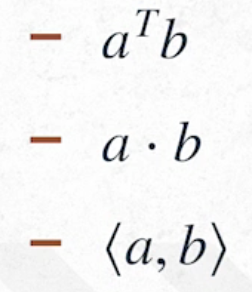
-
Dot notation
- the dot product of 2 vectors is calculated by multiplying their corresponding elements by each other and then summing them all
- it is a single number that provides information about the relationship between 2 vectors
- It could be represented with the following formula, where a and b are vectors of the same dimensionality and ai represents the ith element of a
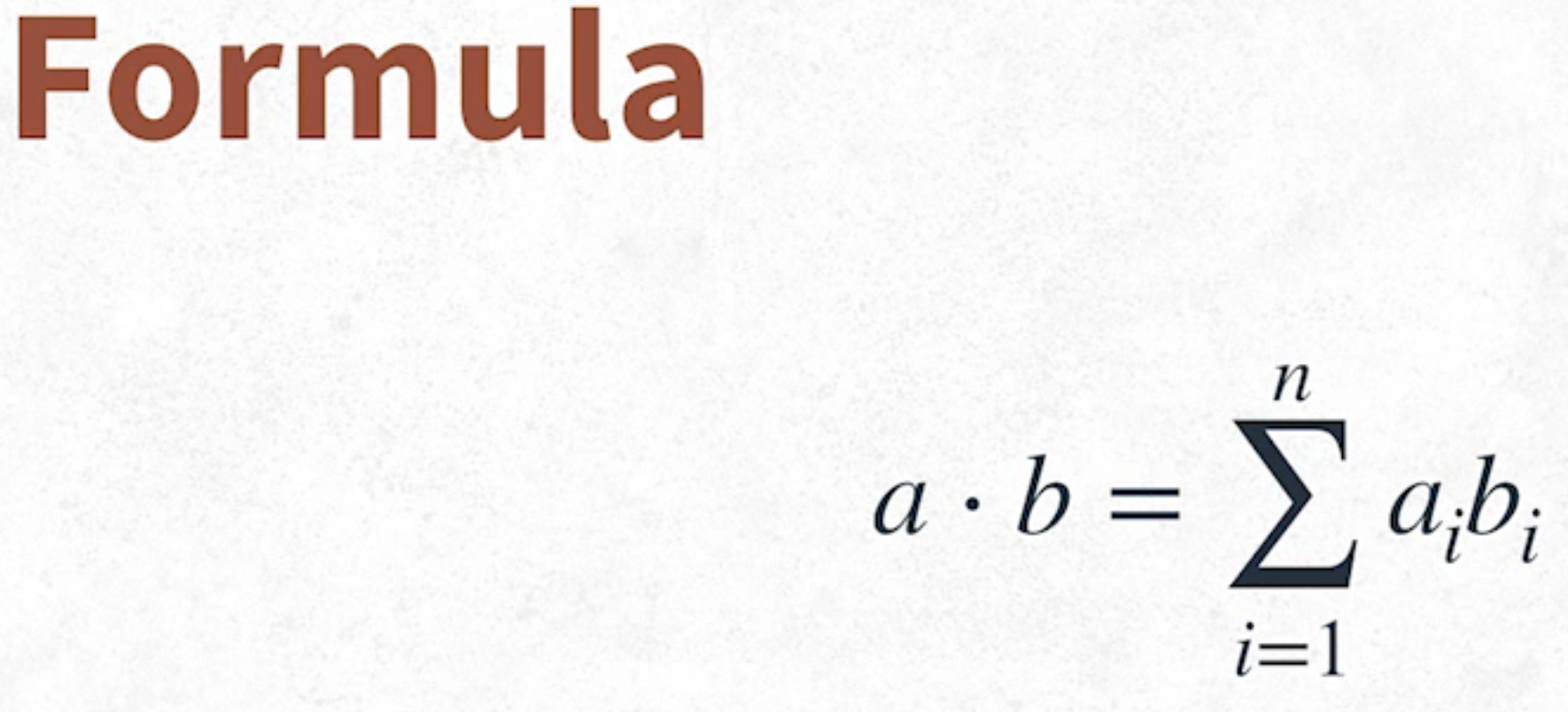
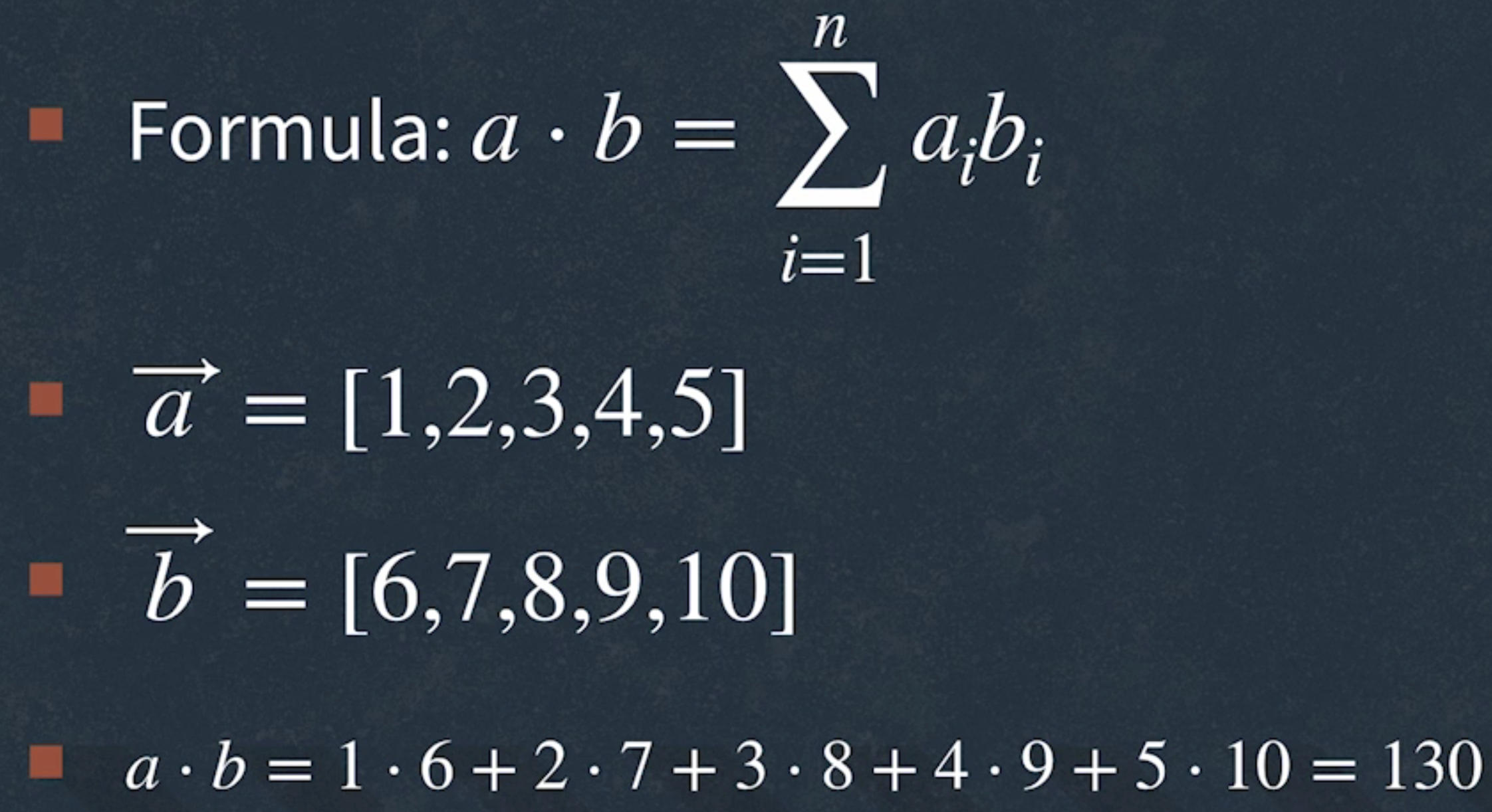
import numpy as np
a = np.array([1, 2, 3, 4, 5])
b = np.array([6, 7, 8, 9, 10])
np.dot(a, b) # 130
- Basic Properties of Dot Product
- The dot product is a commutative operation, meaning if vectors switch places, the dot product stays the same
a . b = b . a
- the dot product is distributive over addition, meaning the following formula applies
a(b + c) = a . b + a . c
- The dot product is a commutative operation, meaning if vectors switch places, the dot product stays the same
import numpy as np
a = np.array([1, 2, 3, 4, 5])
b = np.array([6, 7, 8, 9, 10])
np.dot(a, b) # 130
c = np.array([11, 12, 13, 14, 15])
np.dot(b, a) # 130
first_result = np.dot(a, b + c) # 335
second_result = np.dot(a, b) + np.dot(a, c) # 335
Scalar and Vector Projection
- it is an important part of ML because it makes mathematical operations and applying ML models easier
- Magnitude of a Vector
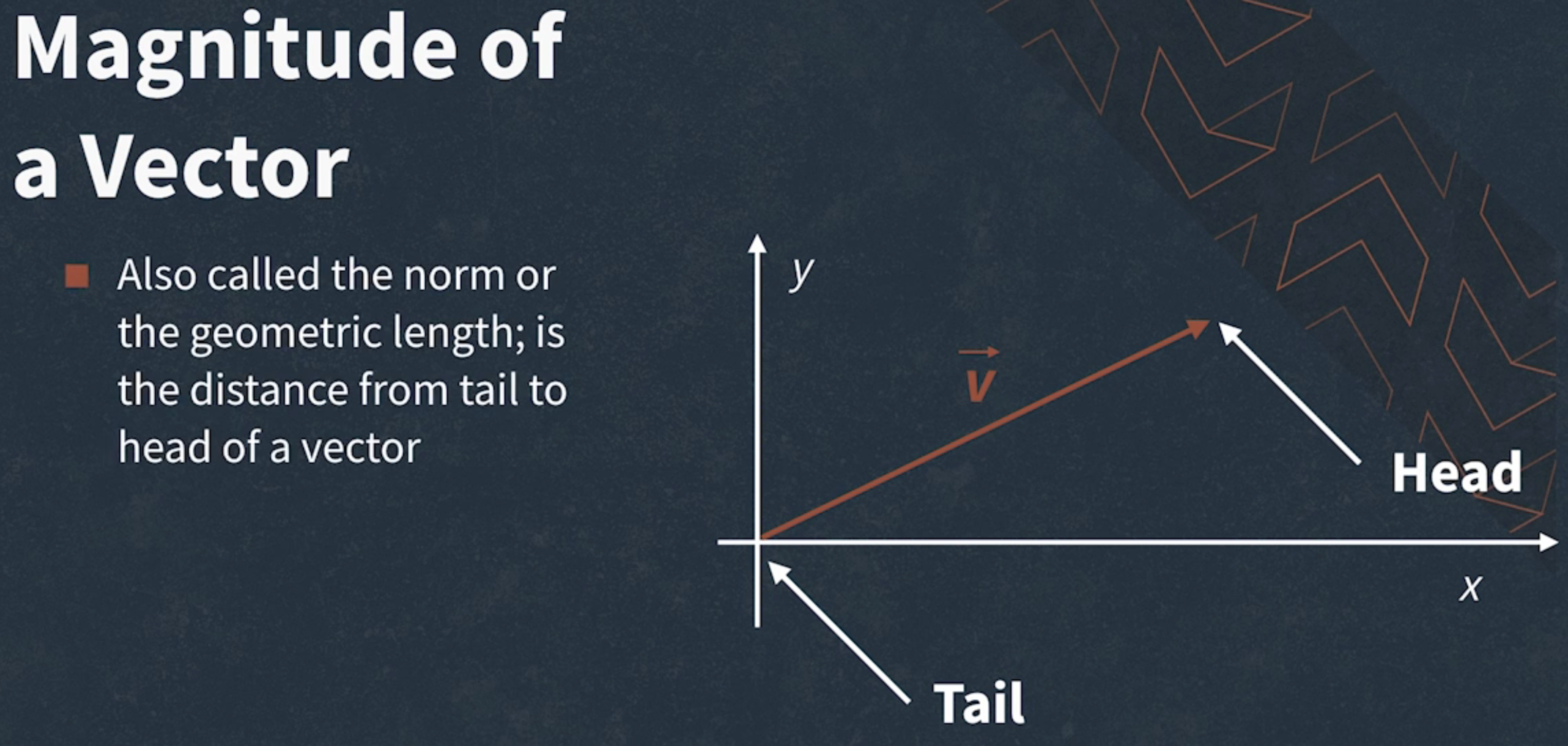
- it computes using the standard Euclidean distance formula
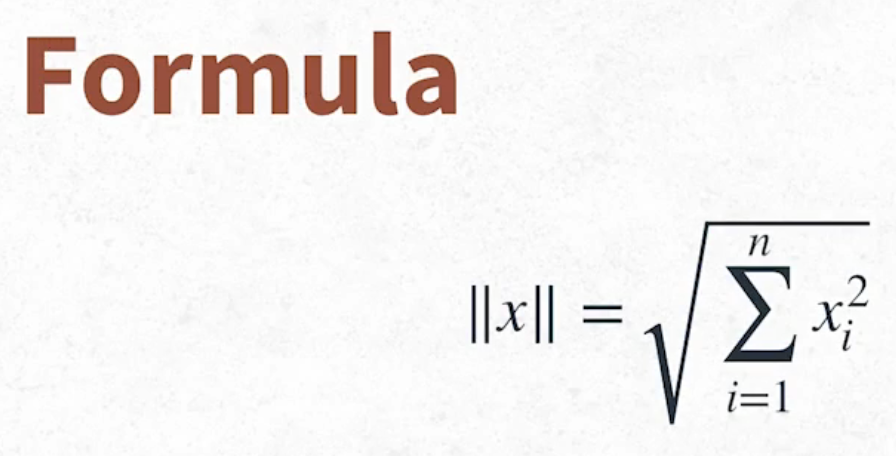
- Vector magnitude is indicated using double vertical bars around the vector
||x||
- Vector magnitude is indicated using double vertical bars around the vector
- it computes using the standard Euclidean distance formula
import numpy as np
x = np.array([1,2,3,4,5])
np.linalg.norm(x) # np.float64(7.416198487095663)